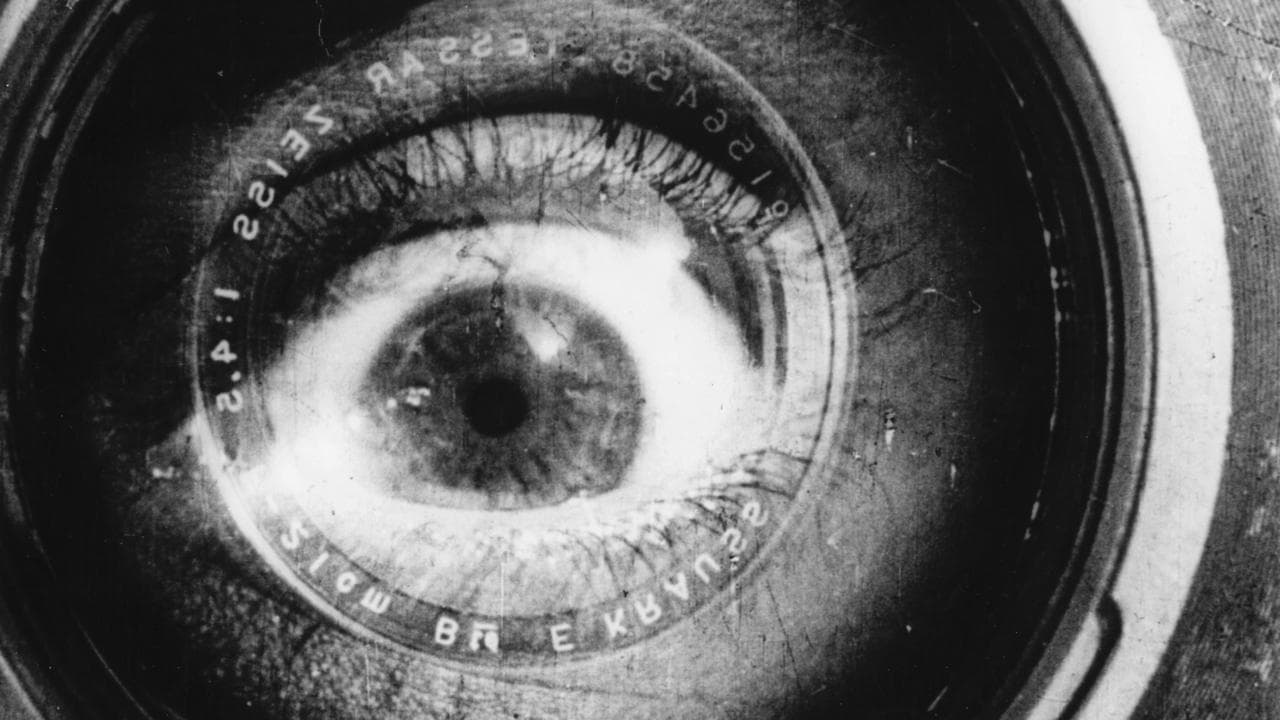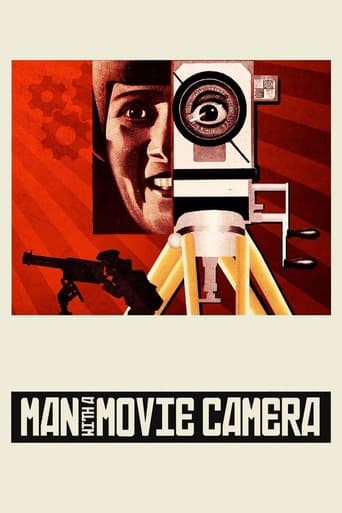

All you really need to "know" (as it were) is that after watching Man with a Movie Camera, you can't escape the impression that Koyaanisqatsi had to have essentially been a remake.The following things come so close as to drive home such a conclusion: It's a frenetic, gushing, pouring-forth hash of largely fleeting images. The images are mostly of urban artifacts. And the music seems to have been written by a guy under the auspices of, really, the exact same muse as Philip Glass.And the funny part is... there's almost nothing else to say! If you, um, "enjoyed" Koyaanisqatsi--OK: maybe "respected" is a better word--you should try out this flick to see if it rustles up the same degree of respect. It did for me! I could have turned if off at any time, and I was riveted by the artful barrage of urban existence imagery.
... View MoreVertov utilises the whole array of available camera and montage techniques to portray a normal day in Russia, while also showing how it is made; fast motion, slow motion, stop-motion, freeze-frame, thawed-frame, playing film backwards, double exposure, etc. A part of the film comes over as a documentary of how a film is made, namely the balance of focus and the daring stunts of early cameramen.What is being filmed is typical for the 'agitprop', i.e. everyday life of the proletariat, here sometimes put in contrast with the lavish lifestyle of the bourgeoisie. Vertov put some dialectical elements in the montage, most notably the diagonals in the earlier parts of the film, other times he draws parallels, e.g. between the working class and the cameraman/director (in my opinion Vertov did this to assert he and other filmmakers belonged to the same group) or between the washing of a woman and the washing of the city.Other communist elements are also present, the one that stood out the most was the glorifying of machines and the relation between man and machine (the total opposite of Japanese New-wave). For the most part the film escapes explicit propaganda, mostly due to the non-narrative form (it is easy to see why Stalin stopped this kind of cinema, as propaganda it did not work for many did not understand the meaning behind the dialectic montage). I needed to acclimate to the normal way of viewing movement after the film had ended, being made strangely aware of the similarities and differences between my eyes and the 'eye' of the camera. It had an hypnotic, psychedelic effect.To conclude, I would recommend this film, but only to those who have some background information on the Russian constructivism, as otherwise this could come over as too nonsensical and pointless (like all those purely structuralist films, e.g. Wavelength).
... View MoreDziga Vertov once said 'to understand a new world we need new mediums'. For humanity 20th century is the century of immerse change and cinema can be easily described as its medium. In "The Man with a Movie Camera" (Chelovek s Kino-Apparatom) Vertov puts cameraman in front of its camera by all means makes him the hero/main character of this movie. Vertov's this decisions drives by its desire to split cinema from all other art forms. That's why we do not see any acting in front of camera but just image and editing. This movie is an historic part of both Soviet and experimental cinema. Also it's shocking to see even today Vertov's vision is still fresh and modern. A must see for all cinema lovers.
... View MoreThis Russian silent film was featured in the book 1001 Movies You Must See Before You Die, I assumed it was a drama or themed story, I had no idea it was a documentary or experimental film, but I was definitely going to watch it because of the high ratings from critics. Basically it is an unabashedly avant-garde style film that proves that film can do anything and take the audience anywhere, it revolutionised many camera effects and techniques that have become standard and often adapted into various genres of film. Camera and editing effects seen in the film include slow motion, fast motion, freeze frames, stop motion animations, footage played backwards, dissolves, tracking shots, double exposure (two or more images played at once), Dutch angles (slanted filming), extreme close-ups, split screens and jump cuts. There is no story, no dialogue, no acting and no setups in the film, it is simply filming Russia as it is, filmed in the Ukrainian cities Odessa, Kharkiv and Kiev it shows every day (then) modern life in the Soviet Union, the working life, the leisures, the transport, the machinery and the various environments. There are occasional shots of a Cameraman (Mikhail Kaufman), the only character of the film, setting up and using his camera in various places, including on a roof and in a beer glass, but otherwise it is all natural occurrences and sights to behold on film. This film apparently took some time to film and edit, you have to give the filmmakers, director Dziga Vertov and editor by his wife Elizaveta Svilova, great credit for creating a masterpiece, inspiring filmmakers for years to come, proving that anything is possible with the various camera techniques used to create whatever story you want, an excellent and radical silent experimental documentary. Outstanding!
... View More